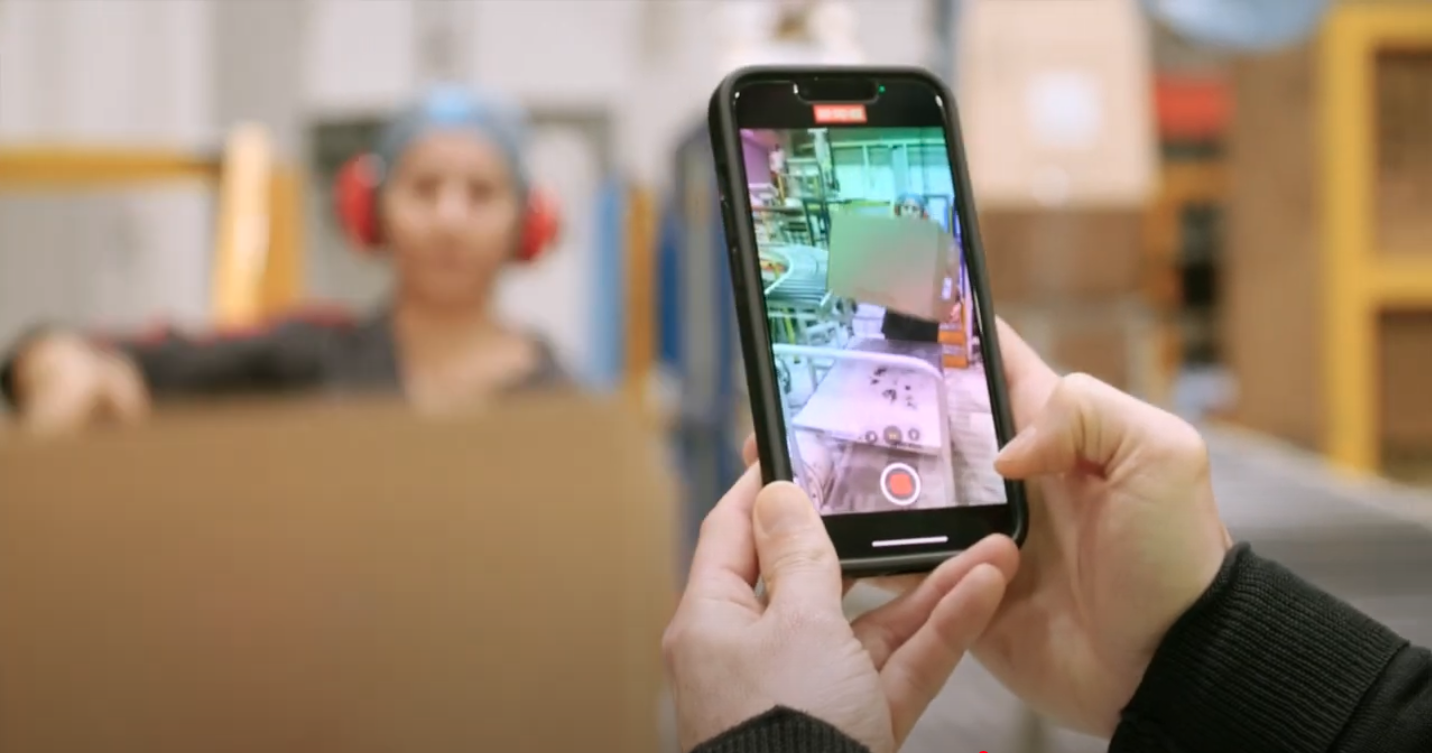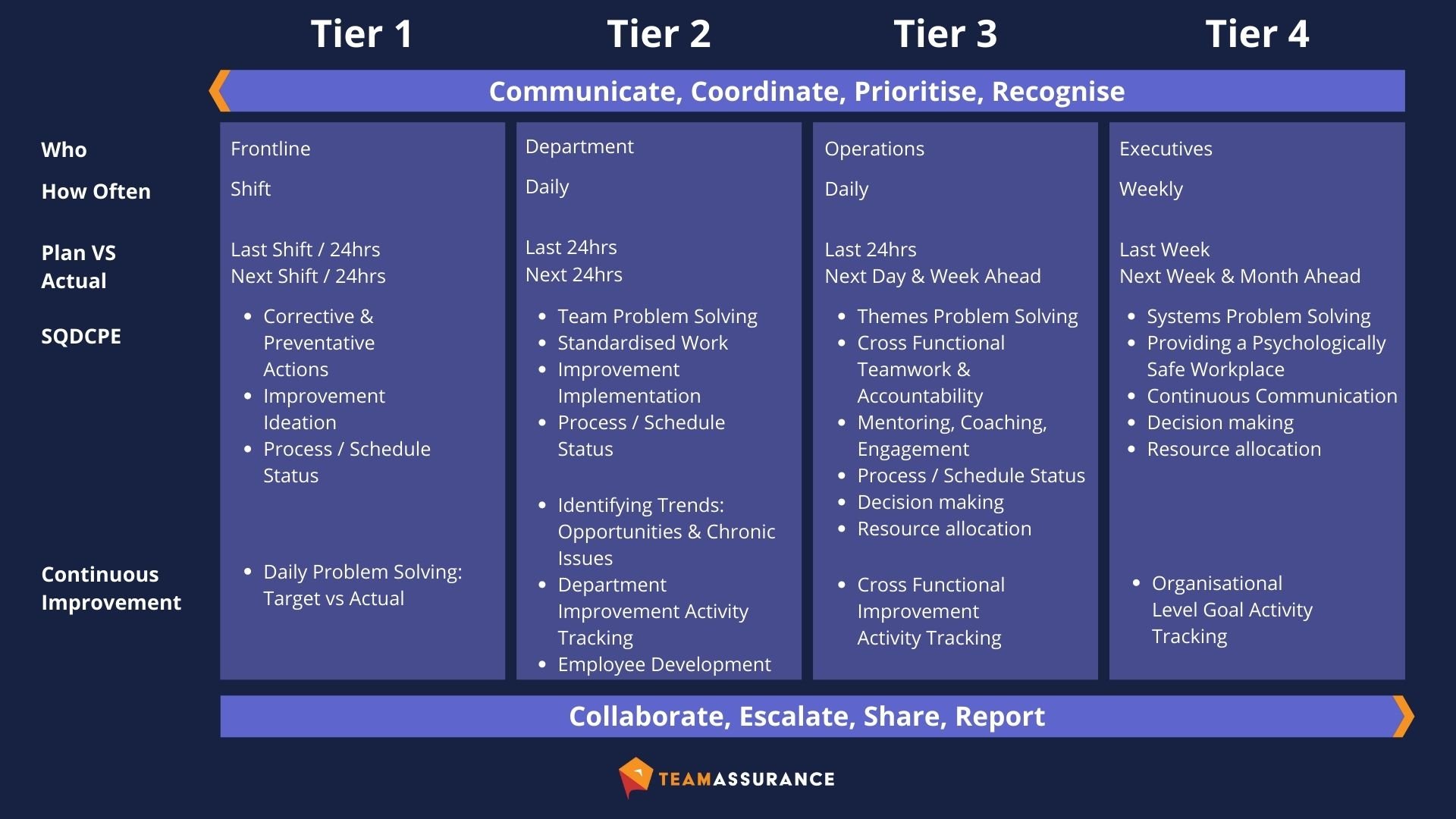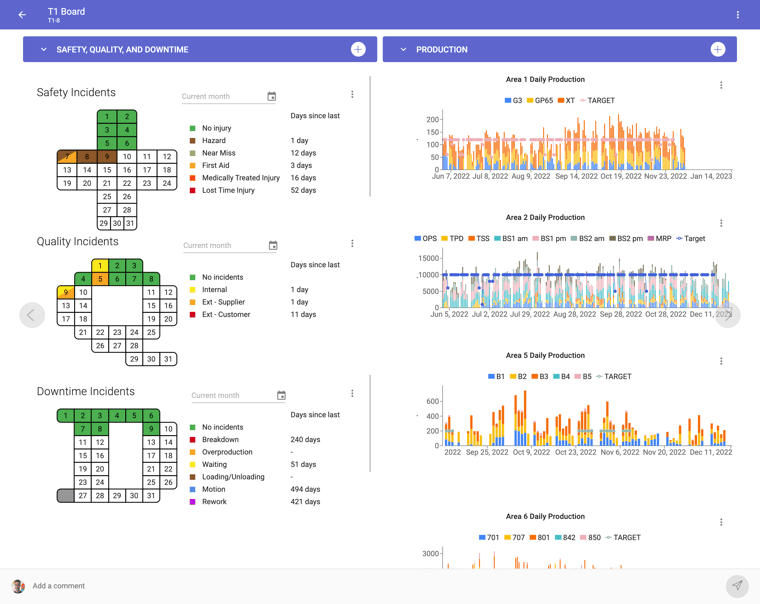Top Lean Tips for 2023

Discover our top Lean tips to keep in mind throughout 2023.
In 2023, traditional Lean principles will continue to support your improvement initiatives - however, elevating your existing systems and processes with the help of digital should be a priority.
Read on as we dive into the top consideration when it comes to embedding a Lean mindset throughout 2023.
Build purpose and value into daily management

Demonstrating a respect for people is done by including all stakeholders in the strategy development and deployment process. Furthermore, detailing a plan for achieving those goals and breaking them down into manageable chunks is key to strategy success.
A big reason for taking the time to do this is so that we can then centre daily huddles on demonstrated value and how it is moving the needle toward our goals.
How do we add value today? What were our biggest successes yesterday? Where do we see opportunities for improvement?
These are key questions that help us stay the course, prioritise actions, and provide clarity around the why of our daily toil.
Tier meetings at all levels are regular chance to check-in with everyone, take stock of operations and routinely connect our people to the bigger picture. The image below illustrates the typical foci and cadence of tier meetings:

These meetings are also an opportunity to ensure that individuals have everything they need to do their best work or require support. Even better, with the right tools our people don't have to rely on leaders to connect them with other tiers or functions when in fact there is a need to escalate issues or request additional support.
On that note...
Create a culture of continuous improvement and autonomy

Creating a culture of continuous improvement means encouraging employees to take responsibility for improving their own processes and providing them with the necessary training and resources to do so.
This organically builds trust, transparency, and accountability into the organisation's culture. All three of these elements are essential if you want people to be open about process behaviour or any problems that may arise. You'll often hear this termed as a 'No Blame Culture' or a 'psychologically safe environment'.
This feeling of safety is crucial to building a true learning organisation where staff work as equals instead of being subjected to top-down management styles without input from those who actually do the work.
Remember, 'no blame' doesn't mean 'no accountability'. When we give autonomy to our people and clearly communicate objectives, everyone is responsible for following through on commitments made during meetings/discussions. achieving their KPIs no matter their level of seniority or function.
Embrace change and failure
We live in a world where change is constant. It's important to understand that failure is a part of the process and to learn from it. Failure should not be seen as a bad thing, but rather an opportunity to improve performance.
When we approach problem solving with a 'no blame' and CI mindset we are providing a dynamic framework to follow, that itself can be changed if it does not lead to desired outcomes.
Your people will need to be able to adapt and adjust if things don't go according to plan, so embrace change. Don't be afraid to question and regularly review your processes, no matter how established, to achieve optimal value flow free of waste.
Find your process flow
Process flows are a visual representation of the steps in a process. They help you understand where value is added at each step and can help identify waste, bottlenecks, and other productivity issues. Process flows should include all the steps, actors involved and inputs/outputs that make up the business process under review (for example, sales and accounting).
Process behaviour charts are also helpful when monitoring processes as they can reveal problems with work-in-progress inventory levels or lead times on specific tasks over time.
Look for value beyond your four walls
It's easy to get stuck in the mindset of looking at value only from your four walls. But if you're not thinking about customer value, you're missing out on a huge opportunity.
Customer value is not always obvious, and it's not always the same as revenue or profit. For example, a company that sells products could have high profit but low customer satisfaction—meaning they might actually be losing money by selling their product! By focusing on customer satisfaction over profits, they could find ways to improve their sales and increase revenue with happier customers.
The first step toward measuring customer value is identifying what makes your customers happy (and which metrics reflect that). Then you can use those metrics to determine how much each one cost and whether or not it was worth it in terms of revenue growth and overall business success.
Implement digital lean tools

Digital tools can elevate your existing processes and systems, helping you to measure the progress of your lean program. They also help your people to communicate and demonstrate impact. The best digital tools are inclusive and help you retain internal business knowhow as a competitive advantage.
To succeed at lean, you need to keep some fundamentals in mind
While lean is a simple concept, it does not mean that it is easy to apply. In fact, lean concepts can be difficult to implement in practice. To succeed at lean you need to keep some fundamentals in mind:
-
Follow a PDCA approach to improvement (Plan-Do-Check-Act). This means setting goals, measuring performance against those goals, identifying steps for improvement and implementing them before checking again on whether your improvements have been effective.
-
Focus on eliminating non-value adding activities from your process. In addition to eliminating waste, focus on increasing efficiency by reducing batch sizes and cycle times so that work flows through the system more quickly and there are fewer delays for waiting for supplies or other inputs before starting the next step of an operation.
-
Engage every function and tier of the business (and even suppliers ) in improvement activity since all areas must be improved if real success is going to occur. This is applicable to all of an organisation’s processes, products, or services offered.
Lean improvement is an ongoing commitment
The key takeaways are that lean is a process, and that it requires ongoing investment in your teams and their time. You can’t just 'set and forget'. Remember, it’s an ongoing commitment to continuous improvement. Lean achieves its best results when managers and workers alike commit to finding value beyond their four walls, embracing change rather than shying away from it, looking for ways to improve through trial-and-error—and implement digital tools that can elevate your improvement activity.
Consider Lean Tools Within a Greater C.I. Framework
For any processes to not only be sustained, but to thrive, it must be supported by adjacent processes and systems. So whatever Lean tools you utilise in 2023 - consider how they interconnect. Ensure you don't optimise or develop them in isolation. Core tools like Leader Standard Work, standardised problem solving techniques, and a Tiered Daily Management system should work together to handle the full PDCA loop. These (and the above considerations) are by no means an exhaustive list. When optimising with the whole framework in mind organisations maximise their investment in Continuous Improvement initiatives.
The image below shows how we designed an interconnected platform that avoids disconnected ‘Point Solutions’ (digital or analog) that do not help, and or even act as barriers, to achieving an optimised CI framework.

Want to explore the opportunities offered by digital-aids to Lean tools? If you’re a Business in need, or a Consultant with clients in need, contact us for a demonstration of the TeamAssurance platform today.

